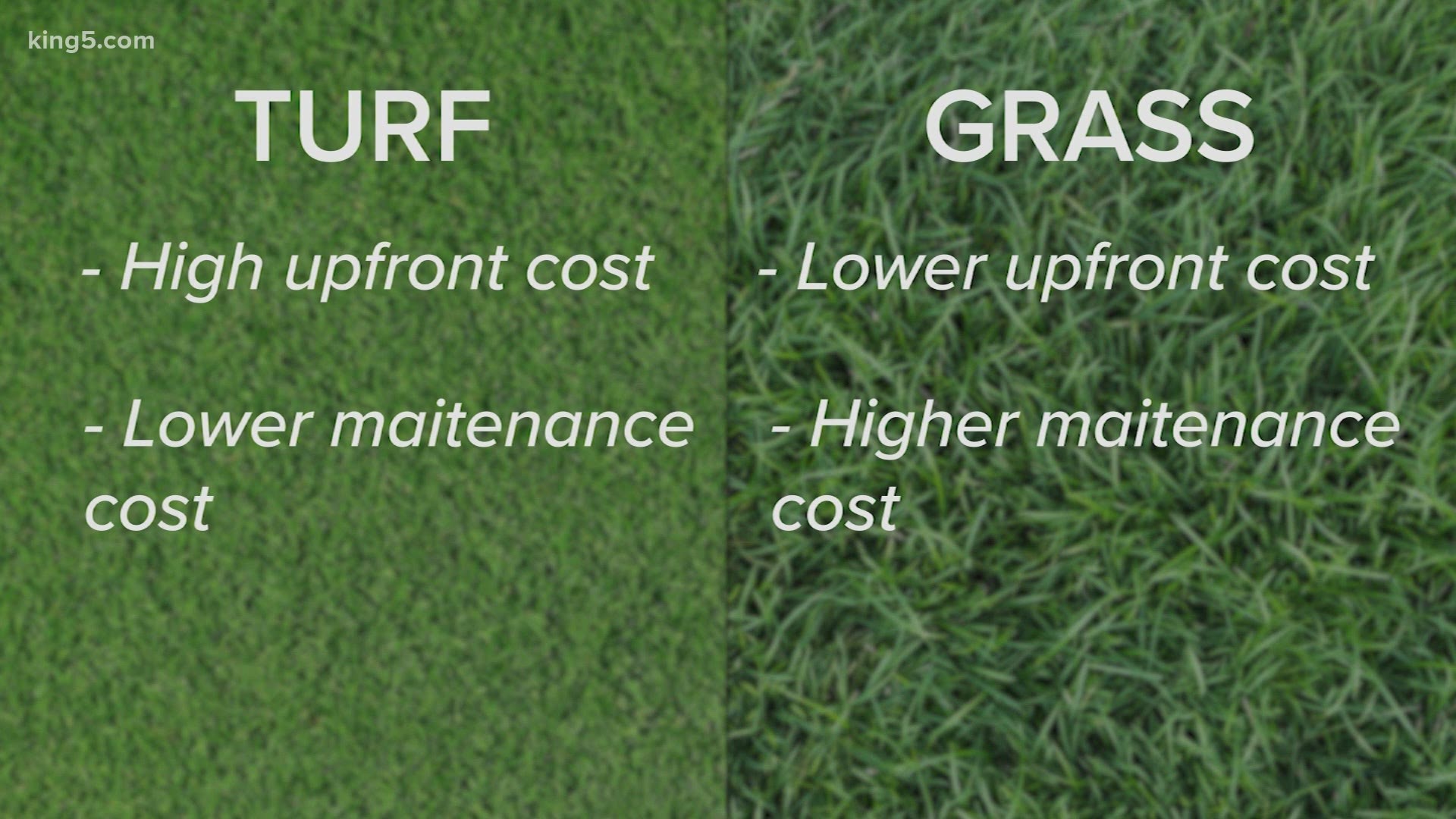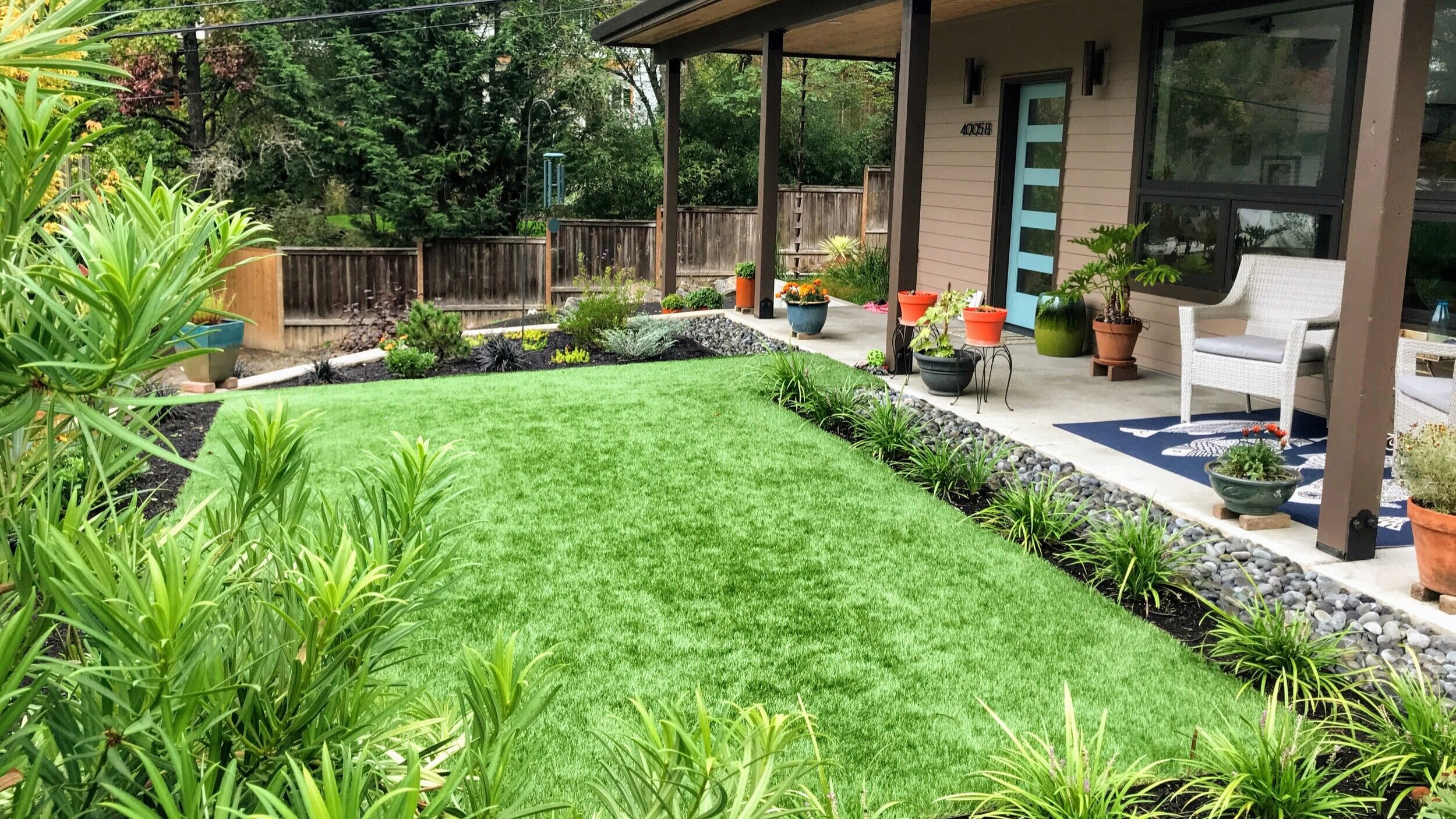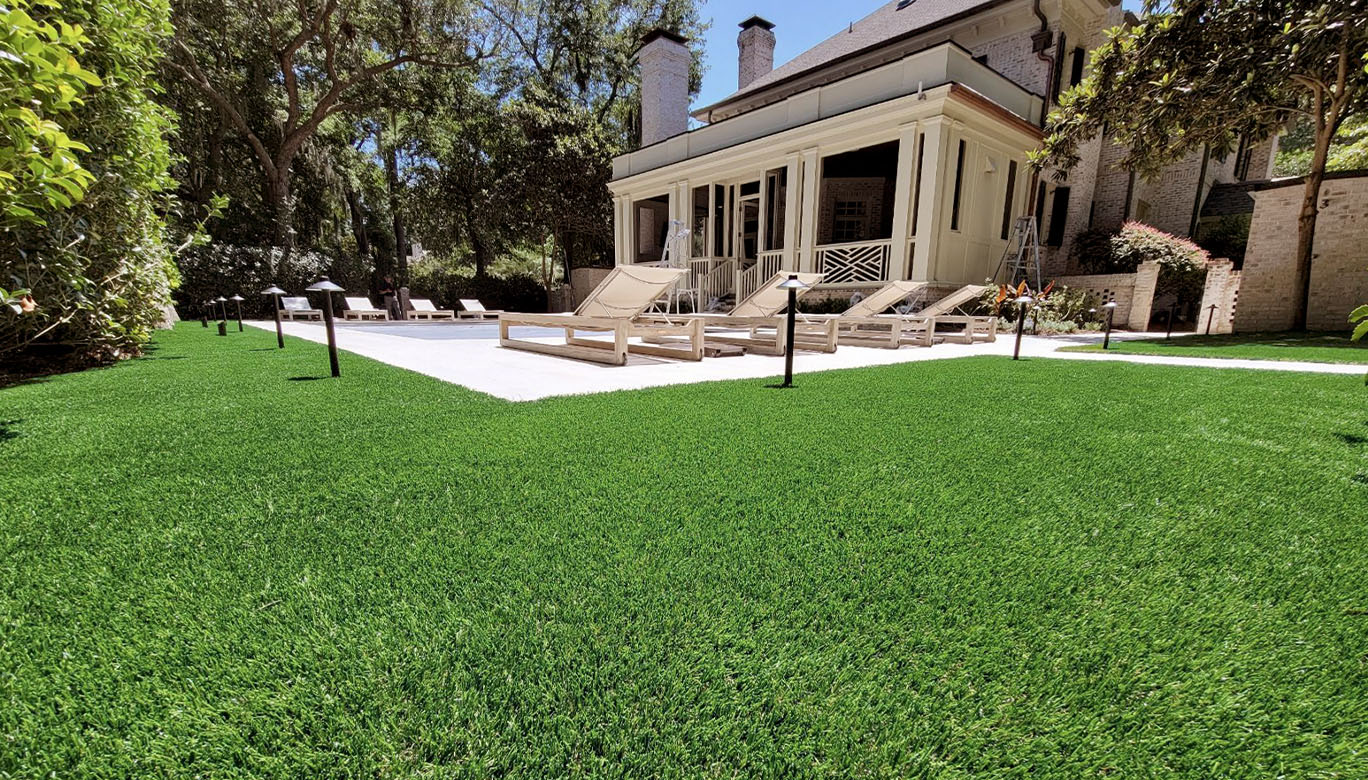Artificial Grass: The Eco-Friendly Selection for Lasting Landscape Design
Artificial Grass: The Eco-Friendly Selection for Lasting Landscape Design
Blog Article
Artificial Lawn: The Ultimate Remedy for Easy Grass Care
Synthetic yard has been steadily obtaining appeal as a practical option to conventional lawn upkeep. From installment ins and outs to long-lasting cost contrasts and ecological effects, the decision to decide for artificial lawn entails a nuanced examination.
Advantages of Artificial Yard
Synthetic grass supplies a functional service for those seeking a gorgeous grass without the problem of continuous upkeep. Unlike all-natural turf, which requires normal watering, mowing, weeding, and feeding, fabricated lawn remains green and vibrant with very little effort.
Furthermore, man-made yard supplies a regularly cool and well-manicured appearance throughout the year. Its sturdiness allows it to hold up against heavy foot web traffic, harsh climate condition, and pets without revealing indicators of deterioration - Artificial Grass. This durability guarantees that your exterior space continues to be beautiful and inviting, improving the general visual of your property
Furthermore, fabricated turf is a cost-effective choice in the future, as it gets rid of the need for pricey upkeep devices, water costs, and specialist solutions. Its initial installment price is rapidly offset by the savings built up from decreased maintenance costs, making it a sensible investment for house owners wanting to improve their outdoor areas easily.

Installation Process
The seamless assimilation of man-made turf into exterior rooms starts with a thorough installment procedure that makes certain a long lasting and visually attractive result. The existing lawn or surface is carefully dug deep into to develop a smooth and degree base for the fabricated turf to be laid upon.
Following this, a layer of compacted sand or accumulation is spread out and leveled to further boost the security and water drainage of the artificial grass. This in-depth setup process is important in achieving a flawless and durable man-made turf yard.
Maintenance Tips
To promote the beautiful appearance and performance of your synthetic turf yard, routine upkeep methods are necessary. Furthermore, rinsing the artificial lawn with water regularly can aid remove dust and small fragments that might clear up on the fibers.

Moreover, if you have animals, it is vital to tidy up after them promptly to protect against smells and microbial growth on the man-made turf surface. By adhering to these upkeep suggestions, you can ensure that your fabricated yard lawn remains in leading problem for many years to come.
Price Contrast With Natural Grass
Comparing the overall expenses in between fabricated turf and natural lawn discloses considerable differences that can affect long-lasting upkeep expenditures. Synthetic lawn calls for minimal maintenance contrasted to all-natural grass, which entails routine watering, mowing, feeding, and insect control.
Over time, fabricated grass shows to be a lot more affordable as it article source removes the requirement for these normal maintenance activities. Additionally, man-made yard is long lasting and immune to damage, lowering browse this site the demand for substitutes and repairs that are common with natural grass. By considering the overall expenses associated with maintaining a grass, fabricated grass emerges as an economically prudent option for home owners seeking to minimize lawn treatment prices over time.

Environmental Impact of Artificial Grass
Provided the financial benefits of selecting man-made grass over natural grass, it is essential to evaluate the environmental impact associated with using synthetic grass. While artificial grass eliminates the requirement for water, pesticides, and mowing, it presents certain ecological problems. One significant problem is that synthetic yard is normally made from non-biodegradable materials such as polyethylene and polypropylene, which can take centuries to break down in land fills. The production of these products also includes using power and resources, adding to carbon emissions and ecological degradation.
Additionally, artificial turf can cause warmth retention in city areas, impacting regional microclimates and raising energy usage for cooling. The absence of all-natural soil and plants additionally hinders water absorption and adds to surface overflow, possibly resulting in water air pollution. Additionally, the disposal of synthetic grass at the end of its life expectancy provides a challenge, you could try this out as recycling choices are limited and commonly not widely available. Therefore, while fabricated lawn provides benefit, its ecological effect should be carefully thought about in decision-making processes.
Conclusion

Finally, artificial yard provides a low-maintenance and affordable service for maintaining a beautiful yard. The installment process is simple, and with correct treatment, artificial turf can last for several years. When compared to all-natural yard, man-made yard needs much less water and upkeep, making it an eco-friendly option. Generally, artificial turf is a functional alternative for those wanting to delight in a green and lush lawn without the trouble of normal maintenance.
Contrasting the overall expenses in between fabricated yard and all-natural lawn exposes significant differences that can impact long-term maintenance expenses. Fabricated grass requires minimal maintenance contrasted to all-natural grass, which requires normal watering, mowing, fertilizing, and insect control. Furthermore, man-made lawn is resistant and resilient to tear and wear, reducing the need for replacements and repair services that are typical with all-natural turf.Provided the financial benefits of choosing for artificial yard over natural yard, it is essential to evaluate the environmental effect linked with the use of fabricated grass. When compared to natural yard, fabricated grass needs much less water and maintenance, making it an ecologically pleasant alternative.
Report this page